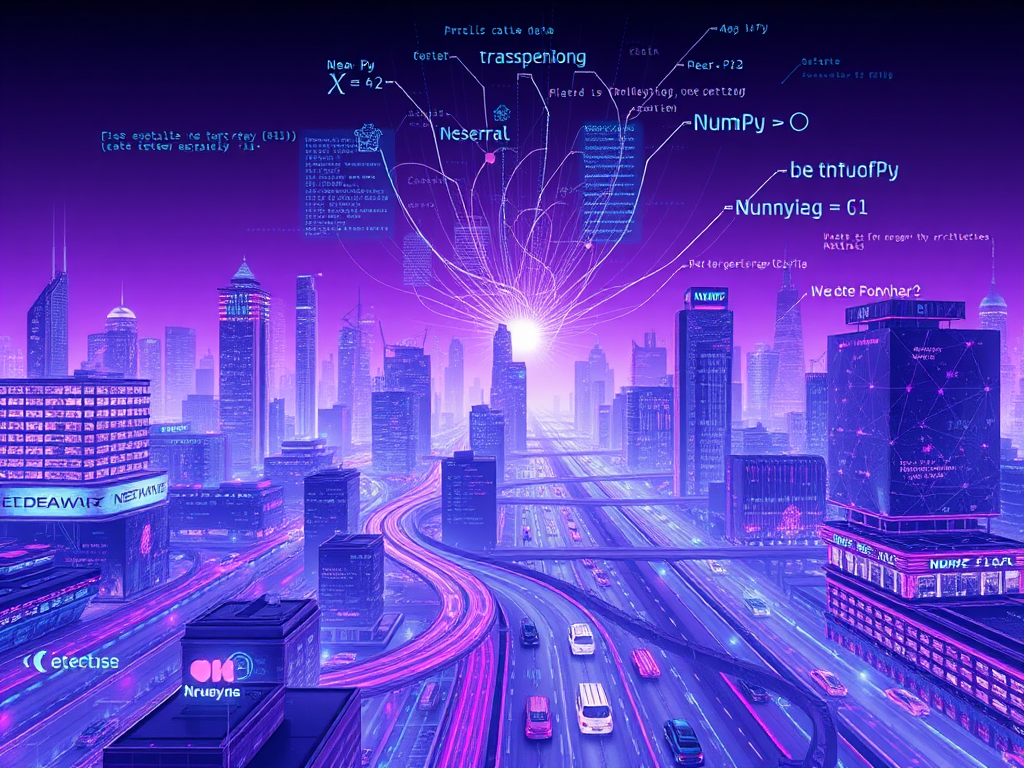Have you ever wondered why Python has become one of the most popular programming languages globally in just a few years? The answer lies in its powerful and rich third-party library ecosystem. Today, let's delve into the world of Python third-party libraries and see how they can give your code wings!
Origins
I remember when I first started learning Python, I was always told "don't reinvent the wheel." At the time, I didn't quite understand what this meant, until one day when I needed to handle some complex data analysis tasks. I spent an entire week writing hundreds of lines of code, but the results were not satisfactory. Later, an experienced colleague recommended the Pandas library to me. I was surprised to find that with Pandas, I could accomplish the work that had taken me a week in just a few lines of code, and the results were more accurate and efficient.
Since then, I've fallen deeply in love with Python's third-party libraries. They're like "magic tools" for programmers, allowing us to achieve twice the result with half the effort. Have you had similar experiences?
Ecosystem
Python's third-party library ecosystem can be described as diverse and comprehensive. From web development to data science, from machine learning to game development, there's a corresponding Python library to support almost every field you can think of.
Take data science as an example. Have you heard of the "data science trio"? They are NumPy, Pandas, and Matplotlib. NumPy provides high-performance multidimensional array objects, Pandas makes data processing simple and efficient, while Matplotlib helps you create beautiful data visualization charts. The combination of these three libraries can meet the needs of most data science work.
For instance, in the field of web development, Django and Flask are two frameworks that are household names. Django is an all-in-one web framework that provides a complete "batteries included" solution; Flask, on the other hand, is a lightweight framework that gives developers more freedom and flexibility. Which one do you prefer?
Finding
So, how do you find Python third-party libraries that suit your project needs? Here are a few methods I often use, hope they'll be helpful to you:
-
PyPI (Python Package Index): This is Python's official package index website, where you can find almost all publicly released Python libraries. You can search for keywords here and view library descriptions, download counts, latest versions, and other information.
-
GitHub: Many Python libraries are open-source on GitHub. On GitHub, you can not only view the library's source code but also learn about the number of stars, forks, issues, and other information, which are important indicators for evaluating a library's popularity and activity.
-
Official Documentation: A good library usually has detailed official documentation. The quality of documentation often reflects the maintenance level of the library. I particularly like libraries with complete API references, rich examples, and clear tutorials.
-
Technical Blogs and Tutorial Websites: On technical communities like CSDN and Juejin, developers often share their experiences using various Python libraries. These articles can help you understand the practical application scenarios and potential issues of libraries.
-
Stack Overflow: If you encounter problems while using a library, Stack Overflow is often a good place to find answers. At the same time, the number of questions and answers about a library on Stack Overflow can also indirectly reflect the extent of its use.
Choosing
When choosing Python third-party libraries, we need to consider multiple factors. Here are some of my personal experiences, hope they can give you some inspiration:
-
Functionality Match: This is the most basic requirement. Do the functions provided by the library meet your project needs? Sometimes, a library that looks cool might not be suitable for your specific scenario.
-
Documentation Quality: Good documentation can greatly reduce the learning curve. I once gave up using a library because its documentation was too rudimentary, even though its functionality was powerful.
-
Community Activity: An active community means you can more easily get help, and it also means the library will be continuously updated and improved. I usually look at the response speed of issues on GitHub and the frequency of Pull Requests to judge.
-
Maintenance Status: A library that hasn't been updated for a long time may have security risks or compatibility issues. I pay special attention to the last update time and version release frequency of the library.
-
License Compatibility: This point is easily overlooked, but it's very important for commercial projects. Some open-source licenses may have restrictions on how you use your project.
Remember, there's no perfect library, only the library that's most suitable for your project. Sometimes, a simple but well-maintained library might be more suitable for your needs than a more powerful but complex library.
Practice
Having said so much, let's look at some specific examples! Here are some widely popular Python third-party libraries in different fields:
- Web Development:
- Flask: Lightweight web framework, suitable for small projects and API development.
-
Django: Full-featured web framework, suitable for large complex web applications.
-
Data Science:
- NumPy: Provides high-performance multidimensional array objects and mathematical functions.
-
Pandas: Provides efficient data structures and data analysis tools.
-
Machine Learning:
- Scikit-learn: Provides implementations of various machine learning algorithms.
-
TensorFlow: Open-source machine learning framework developed by Google, especially suitable for deep learning.
-
Natural Language Processing:
- NLTK: Natural Language Toolkit, provides various text processing functions.
-
SpaCy: Industrial-grade natural language processing library with excellent performance.
-
Computer Vision:
- OpenCV: Provides a rich set of computer vision algorithms.
-
Pillow: Python image processing library, a fork of PIL.
-
Web Scraping:
- Requests: Simple and easy-to-use HTTP library.
- Scrapy: Powerful web scraping framework.
This is just the tip of the iceberg, the world of Python third-party libraries is far richer than this. Which libraries do you use most often? Feel free to share your experiences in the comments!
Tips
Finally, I'd like to share some tips for using Python third-party libraries:
-
Use Virtual Environments: Using separate virtual environments for each project can avoid version conflicts between libraries. I personally like to use the
venvmodule to create virtual environments. -
Keep Updated: Regularly updating the libraries you use can get you new features and bug fixes. But be careful, updates may introduce compatibility issues, so it's best to check the update log before updating.
-
Read the Source Code: When documentation isn't clear enough, reading the source code directly might be the best way to learn. Don't worry, many excellent libraries have very elegantly written source code, reading it is also a pleasure.
-
Participate in the Community: If you find a bug or have suggestions for improvement, don't hesitate to submit an issue or pull request to the library maintainers. This not only helps improve the library but is also a good opportunity to enhance your programming skills.
-
Write Tests: When using third-party libraries, writing unit tests can help you better understand the behavior of the library and quickly discover potential compatibility issues when the library is updated.
Conclusion
Python's third-party libraries are like an inexhaustible treasure trove. They not only help us save time and improve efficiency but also allow us to stand on the shoulders of giants to achieve more complex and powerful functions.
Have you fallen in love with programming because of a certain Python library? Or do you have any insights about using Python libraries that you'd like to share? Feel free to leave a comment, let's discuss, learn, and grow together!
Remember, in the world of Python, you're never fighting alone. With these powerful third-party libraries, your code will be given wings and become unstoppable!
So, which Python library are you planning to try next? Looking forward to hearing your thoughts!




 Previous
Previous 




